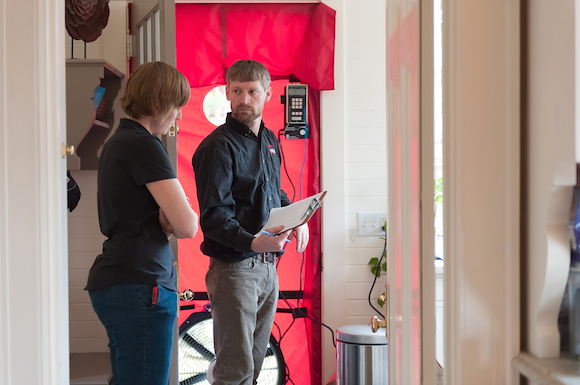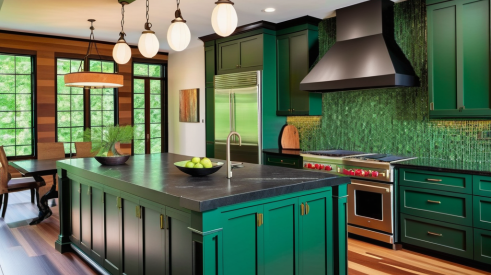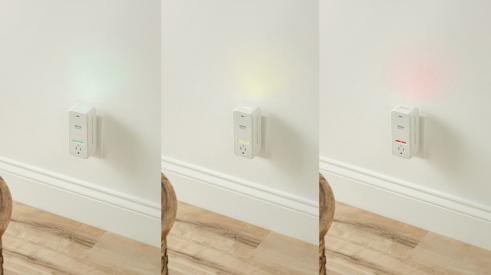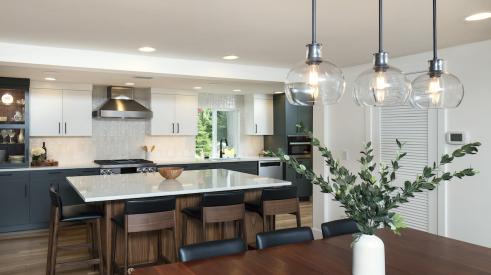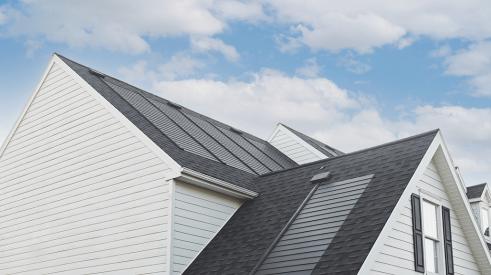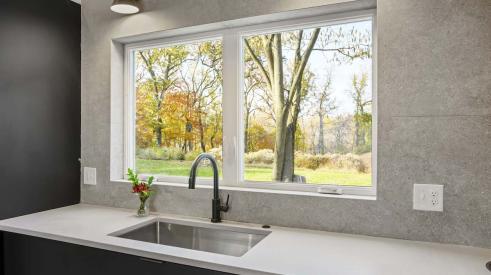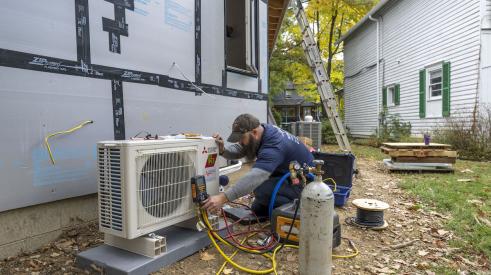Building science is teaching us that houses are complex systems in which the management of air, water, and heat must be carefully coordinated. We interview four long-time practitioners to gain perspective on how they educate clients about the benefits of green remodeling, how they address cost issues, and what obstacles they believe the industry must overcome in its effort to remodel homes to make them safer, healthier, more comfortable, and more self-sufficient.
This month featuring:
 MICHAEL ANSCHEL
MICHAEL ANSCHEL
Otogawa-Anschel Design+Build, Minneapolis-St. Paul
michael@otogawa-anschel.com
Owner of this 20-year-old firm, Anschel is also founder and CEO of Verified Green, a consulting company. He helped build and now serves on the board of GreenStar, a green remodeling standard that now encompasses seven states.
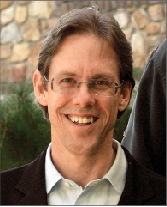 DEVON HARTMAN
DEVON HARTMAN
Hartman Energy Strategies, Claremont, Calif.
devon@hartmanenergystrategies.com
Retired from HartmanBaldwin Design/Build, Hartman now forms collaborative contractor-community partnerships to promote sustainable building pratices. He is founder of CHERP (Community Home Energy Retrofit Project) and a founding member of Efficiency First.
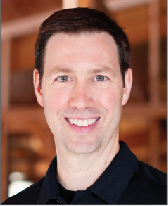 MATT RISINGER
MATT RISINGER
Risinger Homes, Austin, Texas
matt@risingerhomes.com
After working for production builders for 10 years, Risinger formed his own custom building company in 2005. He addresses building science issues and products in his blog and on his popular YouTube channel.
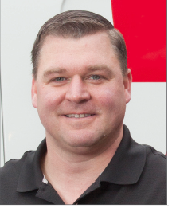 CHAD RUHOFF
CHAD RUHOFF
Neil Kelly, Portland, Ore.
chad.ruhoff@neilkelly.com
Ruhoff has managed the company’s home-performance division since its inception in 2008. Focused on energy retrofits and solar installations, the division employees 75 people and generated $10 million in revenue in 2014.
Sal Alfano: Some people have stopped talking about “green remodeling” as a separate specialty. They say it should be part of a company’s standard practice. Are we anywhere near that point?
Matt Risinger: I don’t use the term “green” anymore because it doesn’t resonate with people, it feels like marketing to them. Most of the time I lead with “comfort”; “energy efficiency” resonates with Baby Boomers because it directly affects their pocketbook. I also talk about “sustainability,” but typically I talk about building science and how building practices affect the consumer.
Chad Ruhoff: It’s hard to use the term “green” and have it mean what you want. We think about four “pillars”: energy efficiency, sustainability, comfort, and health and safety. More and more, health and safety is motivating our customers.
All of our consultants use a short questionnaire in the first meeting with a client to prompt them to talk about their priorities around those four pillars. Whether it’s comfort or indoor air quality [IAQ] or carbon credits that is their priority, we can speak in terms they understand.
Michael Anschel: “Green Building for Urban Living” has been our tagline for 15 years. And when I look outside our market, I still see all of the major organizations heavily promoting “green” options and “eco” options, and they are still selling well. So we still position around it, but four years ago we started making health and safety the focus. Now, it’s all about the kids, the families, and the materials. And it’s the thing that kept us afloat during the recession. We were very busy, and the people who wanted to spend money were less price-conscious and wanted to spend it with someone who was tied to the community.
Devon Hartman: In California, we’ve seen a tremendous shift in people’s values since the recession. We’re very resource constrained out here with water and energy, and that’s on everyone’s mind. So with CHERP—our Community Home Energy Retrofit Project—I’ve focused on creating a fun movement that people want to be a part of and a brand that goes beyond the idea of green.
CHERP has got the entire city of Claremont engaged, and now we’re getting other cities around the state involved. We’re trying to educate people about all of the benefits that accrue through good, solid building practices. Sustainability is just one entry point; if they want to climb on because of energy savings, it’s there; if they’re interested in comfort, it’s there.
We’re also working to change local building codes so that the awareness is much more sophisticated and they won’t accept anything less.
Alfano: A lot of remodelers are not focused on this type of work, and they are not working with high-end clients. What’s the answer for them?
Anschel: I have taken the position for a long time that you don’t have to touch the whole house. I think the notion that air sealing the whole house and creating a thermal envelope is a critical element is not accurate. And putting energy at the foundation of the process is not the right way to think about it. It’s a backward approach. You can do a $20,000 bathroom remodel and make huge impacts on total home performance, durability, and safety.
Green building is about process and behavior change. If you make it this giant endeavor that includes things like passive house standards that don’t really work for American culture, it starts to fall apart. Something as simple as making sure the bathroom has an insulated vent that’s not dumping moist air into the attic where it can condense ... that’s huge.
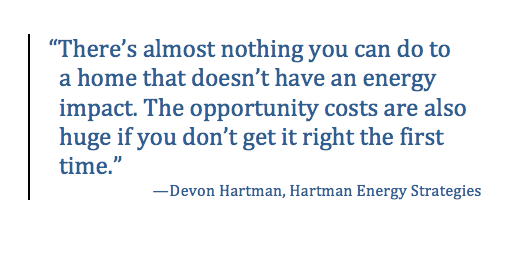 Ruhoff: With our home-performance assessment, we can figure out what the house needs and what the homeowner’s priorities are, then help them decide what to tackle first. Half our clients do everything we recommend; the other half pick and choose from the menu.
Ruhoff: With our home-performance assessment, we can figure out what the house needs and what the homeowner’s priorities are, then help them decide what to tackle first. Half our clients do everything we recommend; the other half pick and choose from the menu.
As to affordability, Neil Kelly’s design/build clientele was high-end, but that’s not the case in the home-performance division. We’re able to touch a lot more homeowners. We did 1,400 audits last year, and that opened up a much broader demographic that has brought in a fair amount of business for the design/build side that they would otherwise not have.
Hartman: That’s a huge thing that we always thought was going to happen around energy efficiency. It happens all the time around here.
Going back to the issue of affordability, certain segments of our population can get left behind if we’re not careful. We’ve created CHERP Unity, which employs interns from the local colleges to identify people who need subsidies, including veterans, people below the poverty line, single parents, and non-English-speaking families. There are lots of pools of money available to help these groups, so we’re trying to match people with programs that help to pay for energy-related improvements. And it’s interesting because not only are the low-end people coming into the fold through this approach, but it’s motivating some of the high-end people to get involved.
Alfano: How does a remodeler who wants to take advantage of subsidies manage the paperwork?
Anschel: Home performance requires equipment and the kind of organization and discipline that most of the industry doesn’t yet have. If you want to tap into those programs and resources, you have to change your company and create a separate division to take up that work. It’s not something that you can just do.
Hartman: It’s the same kind of jump that you make when you start hiring employees and withholding payroll taxes and paying workers’ comp.
Risinger: Most of the time, the architects I work with are deferring to me to figure out where clients are in the spectrum. And even though I can affect product choices and specs, there is still a range that determines how awesome we make the house. For instance, we try to find out early if the client is interested in net zero because that’s a way to really connect energy efficiency with their bottom line. When you’re talking about things you’re doing to get to net zero, there’s a whole host of benefits included that they may connect with.
And some of those are self-serving. As a builder and remodeler, what really got me interested in building science was the mold crisis in 2002. I didn’t do it because I wanted to be altruistic so much as I wanted to save my own hide. And the more I learn about how houses perform, the more I’m motivated to make sure I don’t put myself into hot water. No matter what the warranty period is, if there’s a problem in 10 years or 20 years, it’s going to come back on me. So I’m very specific about what I do to make sure the houses I build don’t rot or mold or have IAQ problems. And all those things that reduce my risk also benefit the clients, whether they know that or not, or whether they care to spend that money or not.
Alfano: Most of what we were doing in the ’70s has been turned on its head. And it’s not simply a matter of doing things correctly, it’s doing them in the right order with the right materials. How does that affect training with your crews?
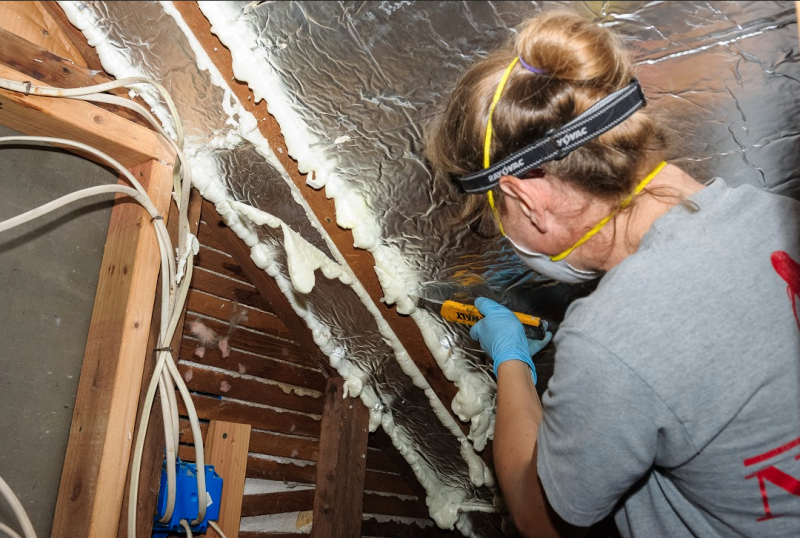 Risinger: At my company it boils down to making sure that everybody who is in a managerial position has a basic understanding of building science principles. But we also want everyone on the crew to recognize when there’s a problem.
Risinger: At my company it boils down to making sure that everybody who is in a managerial position has a basic understanding of building science principles. But we also want everyone on the crew to recognize when there’s a problem.
A couple of years ago I had a carpenter who barely speaks English stop putting up siding because something was wrong. He didn’t understand everything about what the problem was, but he knew enough to see that some flashing was missing and that he should stop work and draw attention to it. I think that can be lacking on jobsites today. Everybody’s in a hurry and under a lot of pressure to finish from clients, the bank, and all these outside forces. And a lot of things get covered up that shouldn’t be.
Alfano: How does that apply to subs?
Risinger: We use the same crews and subs on all our jobs. We’re not trading people out because we’re looking for a better price or a better deal.
Anschel: That’s still my business model: same subs, same crews. But there’s a key piece, which is QA [quality assurance] work. If you don’t have your own QA process internally, you lose the value of some programs. They all require a degree of documentation, third-party testing and verification, and so on to ensure that the work is done properly. But even with our own guys, who we’ve walked through the proper way to install window flashing and what materials to use, we still find that in one out of 30 windows someone was short material and stuck in something else.
Ruhoff: In home performance there is very little we sub out, but it’s definitely part of our QA process. Our scope of work is limited—the things we do we’re doing day in and day out, so we’re not going outside of the box very often.
Alfano: It has always seemed to me that every roof, siding, and window replacement job is an opportunity for an energy retrofit. Should there be more of a focus there?
Hartman: There’s almost nothing you can do to a home that doesn’t have an energy impact. The opportunity costs are also huge if you don’t get it right the first time. I just had some roofers come out to give me a bid, and it’s amazing how much they don’t know. It makes me wince to think that they are out there replacing roofs every day.
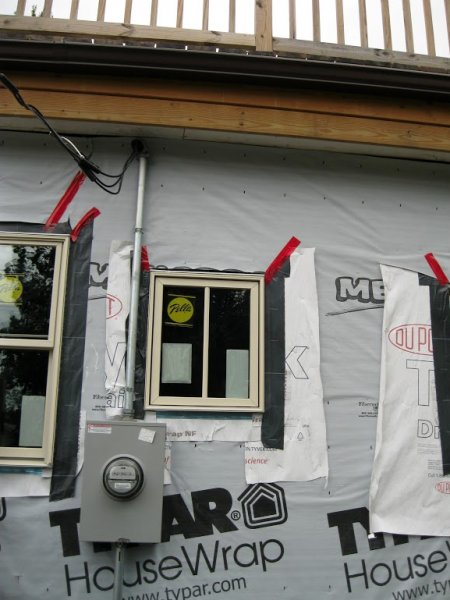 Anschel: That’s true through every layer of the trades. There are basement finishing systems that flat out ignore the physics of the space, then are sold to small contractors who do single-task replacement work with no understanding of the consequences of what they’re doing.
Anschel: That’s true through every layer of the trades. There are basement finishing systems that flat out ignore the physics of the space, then are sold to small contractors who do single-task replacement work with no understanding of the consequences of what they’re doing.
The biggest concern we have in Minnesota is siding and window contractors doing replacement work. They put on a layer of fanfold, new paper, new windows, and tighten up the house, but they don’t touch mechanical systems. So we end up with backdrafting from water heaters and occupants suffering from headaches. And there are a couple of deaths every year from people whose houses are now tight but their appliances still vent atmospherically and create health issues. It’s almost to the point that it needs to be regulated so that those things can’t take place.
Hartman: We need a sense of urgency around this from the entire industry. We have the answers. The government is not going to do this, but we have an opportunity in the remodeling industry to take this on. We can differentiate ourselves and really be leaders in taking this forward and making a difference.
Alfano: What about changes in the codes? Will they be effective?
Anschel: I don’t think codes are going to make a difference. Codes are important for new construction and large remodeling projects, but they don’t extend to a multi-trade requirement. You would need something that says if you’re touching these types of processes, you have to test in and test out these specific elements. But that would be a fundamental shift in the way the codes are built. As much as I would like to see it happen through regulation, it would have to be something like we decide as a country not to sell certain equipment to individuals without a very particular kind of license that requires them to truly understand how that equipment works, what it affects, and how to test for it. But none of those things are controlled by the codes. The energy codes are separate from the building codes, and those are multi-trade codes where single-trade practitioners don’t dwell.
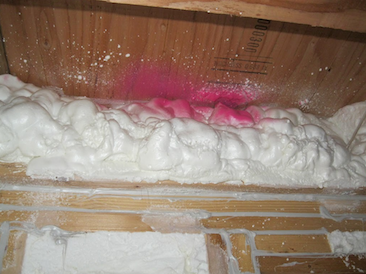 Hartman: The other problem is that you can have a code on the books, but enforcement is another matter. I think only 5 percent of HVAC contractors in California are even pulling permits.
Hartman: The other problem is that you can have a code on the books, but enforcement is another matter. I think only 5 percent of HVAC contractors in California are even pulling permits.
Anschel: Here’s another example. Dow comes out with Froth-Pak foam sealant, and it’s a cool product that let’s you do your own insulating without paying a specialty contractor $900 just to show up. But you’re supposed to have a mandatory 24-hour vacate of the premises with full ventilation while the foam cures. That and all of the health risks that come with using spray polyurethane foam aren’t being taken into account. So there are major health concerns with some of these products that are completely unregulated.
Alfano: In new construction, we can build correctly from the ground up, but where do we start if we want to fix 135 million existing homes?
Ruhoff: I like the idea of working through the codes or the energy department. They just announced that we can no longer sell 80% furnaces in Oregon and Washington. Hallelujah, we’re finally starting to get there. But we’re not going to get to where we need to be until a lot of the stuff that this group is talking about becomes common sense. And that’s probably going to take a long time. It doesn’t mean we should stop trying, but we are completely changing the way people think about houses.
Alfano: Are homeowners any more aware of these issues than they were 10 years ago?
Ruhoff: I think they are. When I first started doing this, it was a struggle to explain why air sealing means I also have to replace the atmospheric water heater. I don’t have to do that anymore. I try hard not to use scare tactics; it’s more A+B=C, not “You’re going to die if I don’t replace your water heater.” But most people are beginning to understand about combustion gases and excess moisture.
Anschel: I agree. Our clients know more today than they ever have before. Clients now come to us with questions about building science, and that didn’t happen years ago.
In our climate in particular, when people have insulated their homes and then have condensation problems, they call us. We talk to them about the need for an ERV [energy recovery ventilator], and it suddenly dawns on them how it all fits together.
Hartman: I completely agree with that. In California there is an untapped demand for these kinds of answers. And all it takes is someone with a little sensitivity and some sales acumen to sit down and help the homeowner unpack these questions and work through to the answers—because they are excited that there actually are answers. There is a huge market for this if you know how to scratch the surface a little bit.
Risinger: I am usually involved with the architect fairly early in the process, mainly to verify cost. With the client, they interview three contractors they’ve worked with before, and in my interview, I’m bringing these things up to explain why I’m the contractor they should work with. I’m explaining that I specialize in understanding the science of what makes a better house and how I’m going to care about energy efficiency and about their health. I’m appealing to the architects to tell their clients that not only can these guys build pretty, they can build a better house than everybody else.
But the first thing people want to know about their contractor is whether they are reputable, honest, and have integrity. Once you’ve got three guys who meet that standard, it’s a question of what separates them from there. Ultimately, good business practices are going to trump green building on just about anybody’s checklist when they’re looking for a contractor.
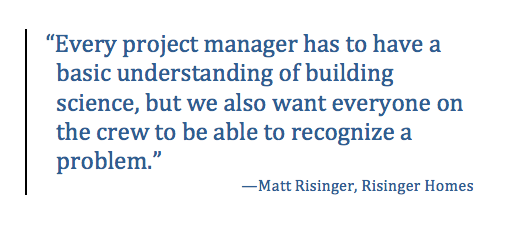
Alfano: This is an unfair question, but what is the premium for making these practices part of a standard remodeling project?
Ruhoff: I don’t think the premium is high at all. In fact, there may not be a premium, but there’s a learning curve to get to that point. You have to master a process. Air
sealing is not expensive if you’re doing it along the way; it gets expensive if you have to come back.
Hartman: You have to ask what assumptions and values you are factoring for. I think it’s fascinating that people are always asking about energy ROI. They never ask that about a granite countertop because there’s an assumption of value. But this other stuff is so much more valuable if they just understood what the benefits are.
Long-term, it’s not more expensive to build right, especially if you consider the health consequences and the higher operating costs for houses that are not built correctly.
When a homeowner asks that cost question, it’s a wonderful time to slow down and really find out what’s important to that person and to show them all of the benefits, economic and non-economic, of these decisions.
Anschel: There absolutely is a premium. You can build a piece of crap for a lot less than you can build something nice. Whether that premium is a green component or some other high-value component is a different question. Instead of looking at the cost, we see it as an opportunity to charge a premium for that service. We can build a really good margin into an energy assessment, and there’s no liability and no warranty work. Then we can sell a larger project with more materials at a higher margin. If clients are able to pay for it, we build our bottom line, but we also build client confidence.
Risinger: I think we need to get good at sales. My clients don’t think twice about spending 20 percent more for a Lexus, even though a Kia has the same features, because they perceive value in the higher-end car. The same is true of tankless water heaters; they aren’t that great on the performance side, but people will spend more to get an endless shower.
Though I got involved in a lot of this to save my hide, as I’ve gotten down the road I’ve realized that there are a lot of other benefits—to my clients, to my business, to society—by building this way. So now I need to be good at selling my clients on why we need to use these practices to build their house at a higher cost.
Alfano: Any final advice for someone just starting to get involved with home performance?
Anschel: If you have a local green building program, pick up a checklist and go through it to see what kinds of tasks are rewarded. It might help you to understand what is actually involved, and it will become a lot less scary. For anybody in a cold climate, the GreenStar [greenstarhome.org] program is free. You can use it to start to edit your best practices and create a better, more profitable company.
Risinger: Get an education in building science. Go to an EEBA [The Energy and Environmental Building Alliance] “Houses That Work” two-day session and learn something about the science behind building. Because if we learn why we build differently from the way we did it in the ’70s, or what went wrong with those houses from the ’70s, we’ll make fewer mistakes in the future. We’ll be more profitable, we’ll enjoy coming to work, and we’ll get fewer phone calls from clients about problems and instead get more calls for referrals. Ultimately, we’ll get a better reputation as an industry; people will see being builders and remodelers as noble professions instead of some party story about how their buddy had a bad experience. PR
Our Remodeler's Exchange panel of four home-performance practitioners discusses the past, present, and future of green remodeling
Add new comment
Related Stories
Working Toward Affordable, Resilient Homes
A new natural disaster protection act from NAHB aims to support hazard mitigation projects
Client Design Choices in the Time of Social Media and AI
Social media speeds up the trend cycles, and now artificially created images are falling into homeowners' hands
Indoor Air Quality Gets Smart
A home's air quality can now be cloud connected and fully automated with this innovative product
Webinar: From Disjointed Design to Cohesive and Efficient—The New American Remodel 2023
Access the recording for the first The New American Remodel webinar held on March 8 at 2 pm CT
5 Standout Energy-Efficient Products Spotted at IBS 2023
See what this green remodeler recommends from the show floor
Innovative Products: GAF Energy Timberline Solar Shingles
GAF Energy’s latest innovation has taken the solar world by storm
Detailed Design: Benefits of Biophilism
See the details our Model ReModel contractors chose to infuse nature into their ADU
Heat Pumps Now Required in Washington New Construction
Washington is the second state to require heat pumps in an effort to electrify homes



